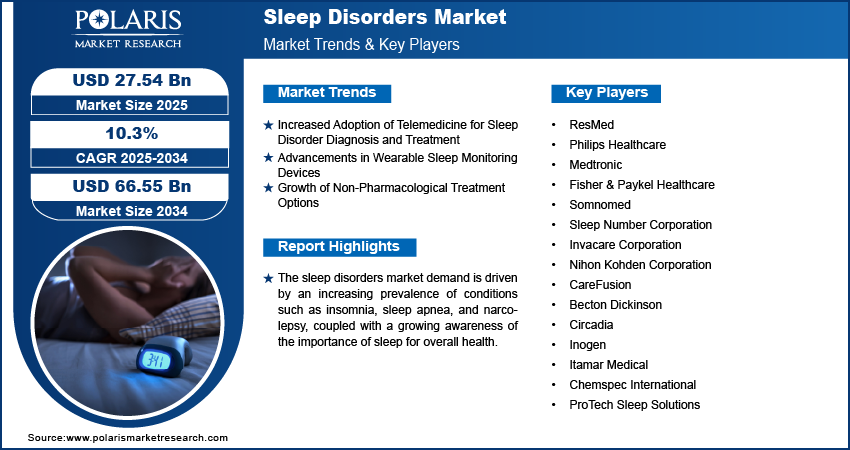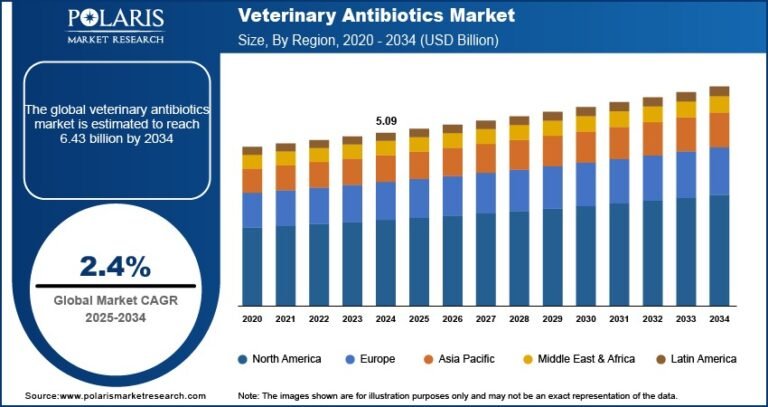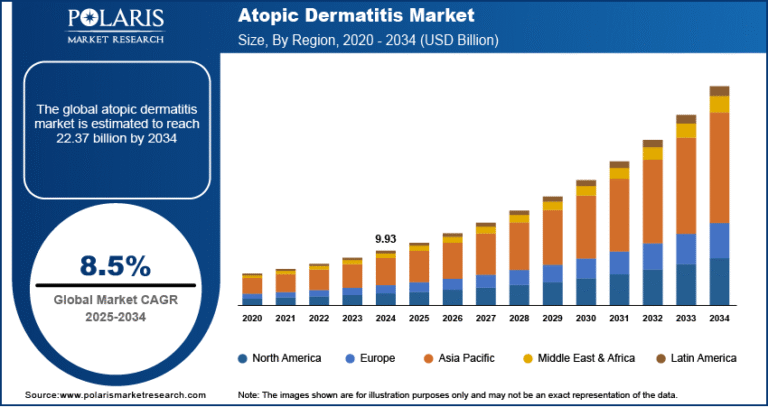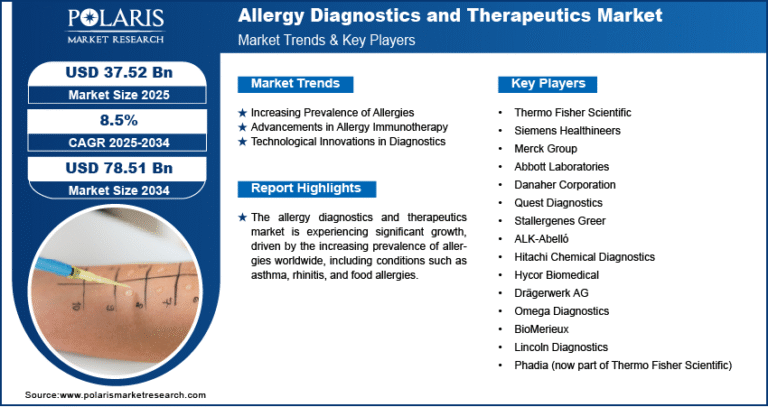Sleep Disorders Market Projected to Reach USD 66.55 Billion by 2034, Growing at a CAGR of 10.3%

Market Overview
The sleep disorders market encompasses the diagnosis and treatment of conditions such as insomnia, sleep apnea, narcolepsy, restless legs syndrome, and circadian rhythm disorders. With changing lifestyles, increased stress levels, and rising awareness about the importance of sleep health, the demand for both diagnostic and therapeutic solutions has grown significantly. This market includes devices such as CPAP machines, wearable sleep monitors, home sleep testing kits, and pharmaceutical treatments targeting various types of sleep disorders.
Trends & Insights
-
Dominance of Sleep Apnea: Sleep apnea is the most prevalent condition in this market, driving strong demand for CPAP and BiPAP machines, especially as diagnosis rates improve.
-
Rising Insomnia Cases: Lifestyle factors, including screen time and stress, have contributed to a notable increase in insomnia diagnoses, leading to rising use of both prescription and over-the-counter medications.
-
Technology Integration: The adoption of smart sleep trackers, mobile apps, and AI-based analytics is transforming how patients monitor sleep and how clinicians make treatment decisions.
-
Homecare Shift: There is increasing preference for home-based sleep tests and therapies, which offer convenience and reduce healthcare costs.
-
Digital Therapeutics: App-based behavioral therapies for insomnia and circadian rhythm issues are emerging as effective non-pharmacological alternatives.
Market Size & Forecast
Market size value in 2025 USD – 27.54 billion
Revenue forecast in 2034 USD – 66.55 billion
CAGR – 10.3% from 2025 – 2034
Request for Free Sample: https://www.polarismarketresearch.com/industry-analysis/sleep-disorder-market/request-for-sample
Key Market Growth Drivers
-
High Prevalence of Sleep Disorders: A significant percentage of the global population suffers from one or more sleep disorders, leading to a growing need for medical intervention and continuous care.
-
Aging Population: Older adults are more likely to experience sleep disturbances, and the global aging trend is contributing to sustained market demand.
-
Increased Awareness and Screening: Awareness campaigns, both public and private, have improved early diagnosis and the willingness of patients to seek treatment.
-
Growth in Wearables and Portable Devices: Portable and wearable technologies are making sleep monitoring more accessible, especially outside clinical settings.
-
Supportive Insurance and Reimbursement Policies: Expanding health insurance coverage for sleep diagnostics and therapy in many countries is encouraging more people to seek treatment.
Market Challenges
-
High Cost of Equipment: Sleep diagnostic devices, such as polysomnography systems and CPAP machines, can be costly, limiting access in low-income regions.
-
Limited Access to Sleep Specialists: Shortage of trained sleep professionals in many areas can delay diagnosis and treatment.
-
Variable Reimbursement Structures: Differences in healthcare policy and insurance reimbursement across countries can hinder uniform market growth.
-
Adherence Issues: Many patients, especially those using CPAP therapy, struggle with long-term adherence due to discomfort or side effects.
-
Data Privacy Concerns: With the growing use of connected devices and sleep health apps, concerns about data security and privacy are becoming more prominent.
Conclusion
The sleep disorders market is poised for significant growth in the coming years, driven by a mix of technological advancements, greater awareness, and increasing demand for home-based and personalized treatment solutions. Addressing challenges such as equipment affordability, specialist availability, and patient adherence will be crucial to unlocking the market’s full potential.






